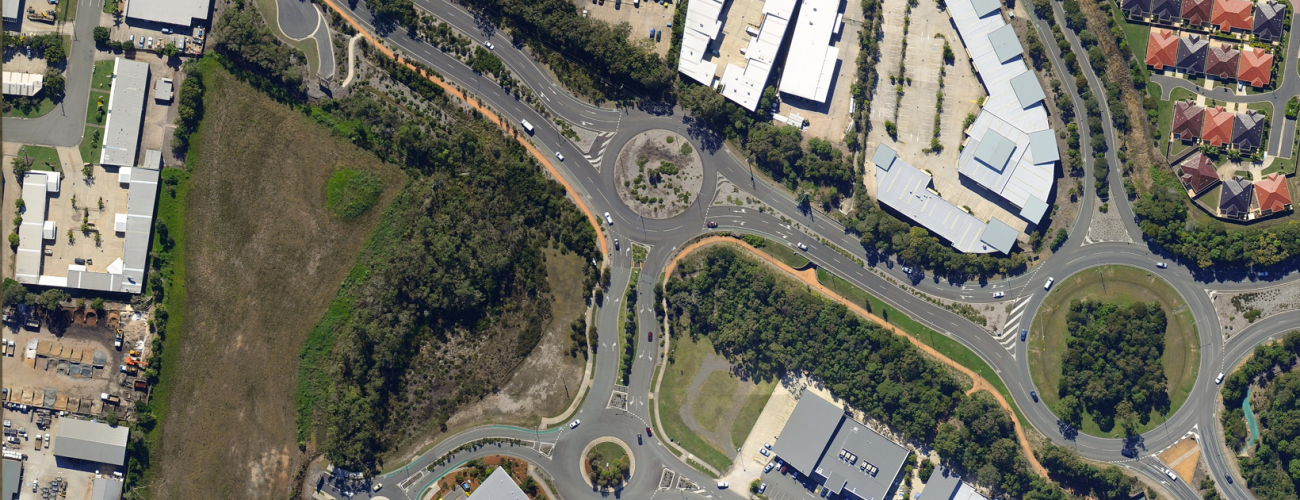We have published our extensive analyses of HCM roundabout capacity research data. These as well as the HCM 6 Extended Roundabout Capacity Model in the forthcoming major SIDRA INTERSECTION version were presented by Mark Besley at the TRB 6th International Conference on Roundabouts (15-18 May 2022).
Reports and presentations are available for download using the links below.
A Comparative Analysis of Exponential and Linear Roundabout Capacity Models Using HCM Research Data
This technical note and conference presentation give the results of an investigation to assess basic exponential (non-linear) and linear model forms used in practice for roundabout capacity estimation. Best fit regression and anchored regression analyses were carried out using the HCM single-lane roundabout capacity research data. The full dataset as well as the Glens Falls and Carmel data subsets were analysed. These two data subsets for different roundabout geometry types represent a horizontal slicing of data with different capacity levels over the same range of circulating flows. To assess the applicability of basic exponential and linear models to low and high circulating flow ranges, additional data subsets were used by vertical slicing of the HCM capacity data. Using this method, two-segment linear and exponential models were analysed. Two-segment analyses were carried out using aggregate data as well. The models assessed also included the TRL-Kimber linear capacity model and the HCM exponential model with a new simplified version of the SIDRA geometry method added. The report includes discussions on frequency of data points in low, medium and high circulating flow ranges, the sum of entering flow (capacity) and circulating flow, the ratio of entering flow to circulating flow, issues related to anchored regression models, follow-up headways implied by best fit regression models being larger than measured values, and the quadratic model. As an issue related to underestimation of capacity at low circulating flows, a detailed single-lane roundabout example is given for unbalanced flow conditions under high demand levels. In conclusion, the assessments from various perspectives reported in this document demonstrate the non-linear characteristic of roundabout capacity data as a function of the circulating flow, and support the HCM exponential (non-linear) roundabout capacity model over the linear model form.
Reference
AKÇELIK, R., SHIRKE, C., BESLEY, M., ESPADA, I. and BILLINGHURST, D. (2022). A Comparative Analysis of Exponential and Linear Roundabout Capacity Models Using HCM Research Data. Technical Note. Akcelik & Associates Pty Ltd, Melbourne, Australia.
AKÇELIK, et al (2022). A Comparative Analysis of Exponential and Linear Roundabout Capacity Models Using HCM Research Data. Presentation at TRB 6th International Conference on Roundabouts, Monterey, California, USA, 15-18 May 22.
Searching for a Gap Acceptance Theory Basis for Linear Capacity Models
This technical note presents an investigation to explore if a linear capacity model can be derived as a gap-acceptance capacity model assuming a uniform or linear arrival headway distribution of the opposing traffic stream. The uniform and linear arrival headway distributions are introduced and the gap-acceptance capacity models based on these headway distributions are presented. The derivations follow the signal analogy method used by the author in deriving the gap-acceptance capacity equations used in the SIDRA INTERSECTION software. It is shown that both the uniform and linear headway distributions result in non-linear gap-acceptance capacity models. Although a form close to a linear model could be obtained by choosing low values of critical gap, these chosen critical gap values were not realistic when compared with observed values indicated by the HCM and Australian research data. The report also discusses application of a simplified SIDRA geometry method for estimating the parameters of the HCM (Siegloch) exponential roundabout capacity model. Results are promising when applied to the HCM roundabout capacity research data with favourable comparisons with the TRL linear empirical model. Alternative calibration methods for the TRL linear roundabout capacity model and HCM (Siegloch) exponential model are also discussed.
Reference
AKÇELIK, R. (2022). Searching for a Gap Acceptance Theory Basis for Linear Capacity Models. Technical Note. Akcelik & Associates Pty Ltd, Melbourne, Australia.
HCM 6 Extended Roundabout Capacity Model in SIDRA INTERSECTION
This conference presentation describes an extended version of the HCM Edition 6 Roundabout Capacity Model. As roundabouts become more widely adopted, a greater variety of multi-lane configurations and more frequent use of slip/bypass lanes are considered in design proposals. The HCM Edition 6 Extended Roundabout Capacity Model application in SIDRA INTERSECTION version 9.1 was developed using the results of roundabout surveys carried out for Wisconsin DOT in the USA. It provides the ability to specify more detailed capacity model parameter values that distinguish different lane configurations. In particular, it allows the calibration of slip/bypass lane capacities independently of entry lane capacities and also adds parameters for three-lane entries. Application of survey data collected for Wisconsin DOT to the Extended Model is discussed.
Reference
AKCELIK & ASSOCIATES (2022). HCM 6 Extended Roundabout Capacity Model in SIDRA INTERSECTION. Presentation at TRB 6th International Conference on Roundabouts, Monterey, California, USA, 15-18 May 22.
